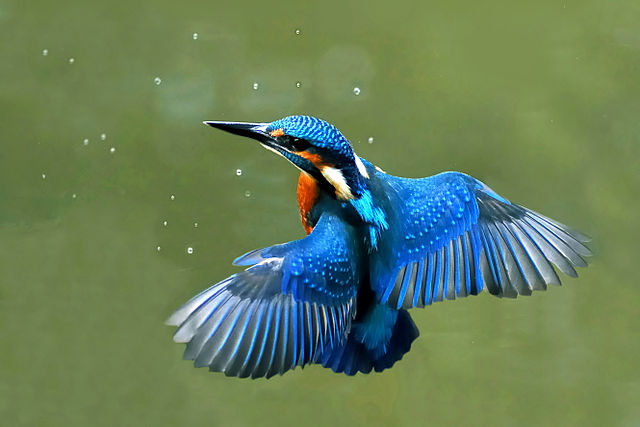Germany announced their national winners. This year contestants uploaded a lot of photos of wild life, so no wonder, that we have them among the winning images. Germany is the 3rd country which choose their top-10 best photos. Take a look!
Alcedo atthis (Common kingfisher)

The common kingfisher (Alcedo atthis) also known as Eurasian kingfisher, or river kingfisher, is a small kingfisher with seven subspecies recognized within its wide distribution across Eurasia and North Africa. It is resident in much of its range, but migratesfrom areas where rivers freeze in winter.
This sparrow-sized bird has the typical short-tailed, large-headed kingfisher profile; it has blue upperparts, orange underparts and a long bill. It feeds mainly on fish, caught by diving, and has special visual adaptions to enable it to see prey under water. The glossy white eggs are laid in a nest at the end of a burrow in a riverbank.
European robin

The European robin, most commonly known in Anglophone Europe simply as the robin, is a smallinsectivorous passerine bird, specifically a chat, that was formerly classed as a member of the thrush family (Turdidae), but is now considered to be an Old World flycatcher. Around 12.5–14.0 cm (5.0–5.5 in) in length, the male and female are similar in colouration, with an orange breast and face lined with grey, brown upperparts and a whitish belly. It is found across Europe, east to Western Siberia and south to North Africa; it is sedentary in most of its range except the far north.
The term robin is also applied to some birds in other families with red or orange breasts. These include the American robin(Turdus migratorius), which is a thrush, and the Australian red robins of the genus Petroica, members of a family whose relationships are unclear.
Heidentor (Egesheim)

Spider

Eistobel

Four-spotted chaser

The four-spotted chaser (Libellula quadrimaculata), known in North America as the four-spotted skimmer, is a dragonfly of the family Libellulidae found frequently throughout Europe, Asia, and North America.
The adult stage is found between April to early September in the United Kingdom, and from mid-May to mid-August in Ireland. Larvae have a two year developmental cycle. Adults feed predominantly on mosquitoes, gnats and midges; the larvae feed primarily on other aquatic insect larvae and on tadpoles.
There is a variant form, praenubila Newman, which has exaggerated wing spots. This is believed to be related to water temperatures during larval development, and appears to be more common in Europe than in the Americas.
The four-spotted skimmer is the state insect of Alaska.
Kniepsand

Bad Tölz-Wolfratshausen

Bad Tölz-Wolfratshausen is a district in Bavaria, Germany. It is bounded by (from the south and clockwise) Austria and the districts of Garmisch-Partenkirchen, Weilheim-Schongau, Starnberg, Munich and Miesbach.
Cave in Bavaria

The photo “Dorumer Moor” has been later proved to be a photomontage and disqualified.
So here is the 10th picture:

References:

One thought on “Top-10 best photos of Germany”